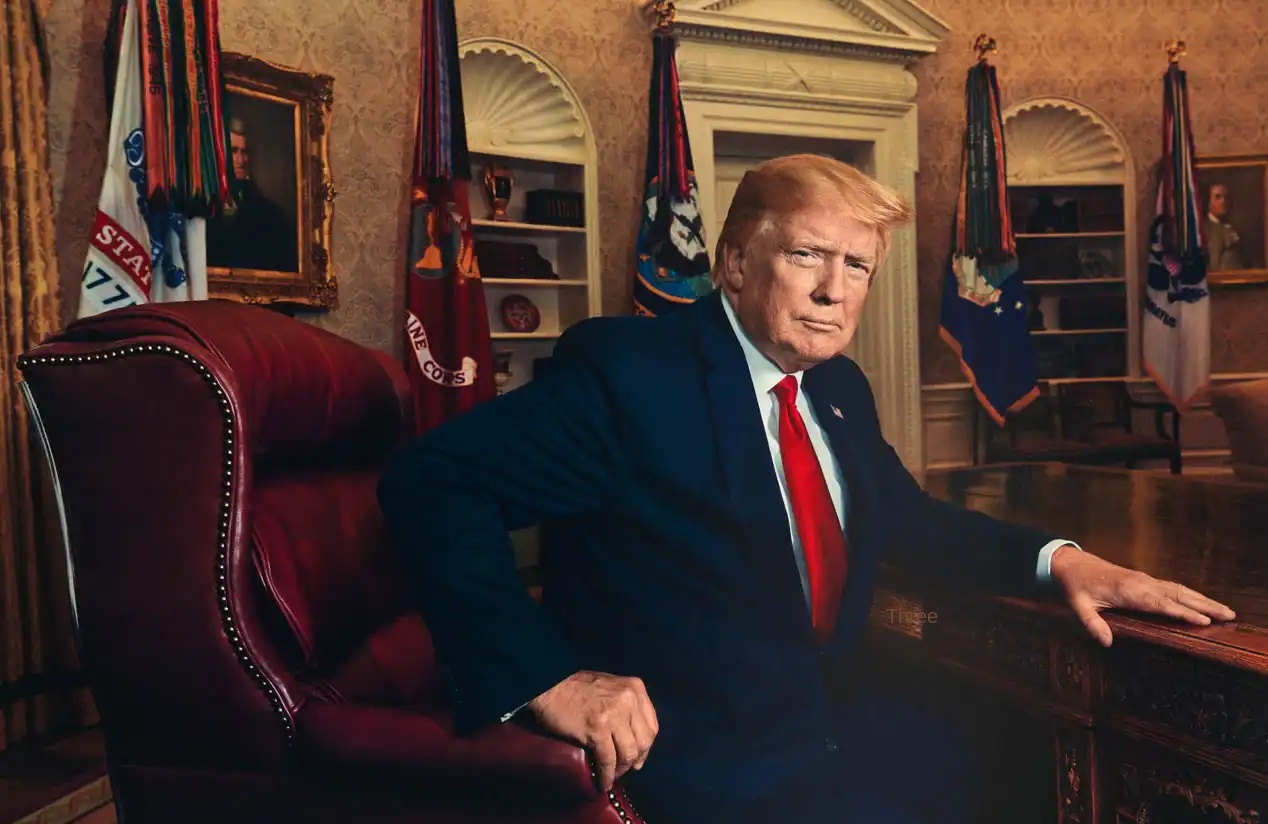Cryptocurrency Milestone Approaching, How Will Three Major Crypto Bills Impact the Industry?
Over the years, the cryptocurrency industry has been growing rapidly in a "lawless" manner. However, this week, the U.S. Congress witnessed a crucial "Crypto Legislation Week," where the GENIUS Act, CLARITY Act, and Anti-CBDC Surveillance State Act collectively created the most comprehensive regulatory framework in U.S. cryptocurrency history. While establishing clear compliance paths, these three landmark acts also prevent the government issuance of a central bank digital currency. If these three bills are passed, they will fundamentally reshape the $2.8 trillion cryptocurrency market.
The House of Representatives' voting process on the three key crypto bills was equally dramatic. Initially, during the first vote, several Republican members unexpectedly flipped, prompting President Trump to summon 12 "key members" whose defection could have prevented the bill's passage to his office for discussions. In the second vote, after nearly ten hours of back-and-forth, legislators finally passed a procedural vote (to determine if the bill can be voted on), making it the longest vote in congressional history. This outcome paved the way for the meaningful consideration of the GENIUS Act, CLARITY Act, and Anti-CBDC Surveillance State Act.

"Defiant" Republicans Against Trump, the Longest Legislative Vote in History
Of particular interest is the GENIUS Act, which aims to establish a federal regulatory framework for stablecoins; the CLARITY Act seeks to define when a cryptocurrency is considered a commodity or security, clarifying the regulatory boundaries of the Commodity Futures Trading Commission (CFTC) and the Securities and Exchange Commission (SEC). Another act aims to prohibit the U.S. from issuing a central bank digital currency (CBDC) to safeguard Americans' financial privacy. If these bills are enacted, the industry will transition from a "try-and-see" approach to innovation into a new era of well-regulated practices.
Congressional Processes and the Initial "Failure"
The GENIUS Act was already passed by the Senate on June 17, 2025, in a bipartisan vote of 68-30, making it the most far-reaching comprehensive crypto legislation to date. However, House Republicans led by Freedom Caucus Chairman Andy Harris (R-MD) demanded stronger anti-CBDC provisions before advancing the bill. On July 15, 2025, 12 House Republicans defied Trump's explicit instructions and, by a vote of 196-223, rejected the procedural rule for the GENIUS Act. This rare Republican internal division centered around a critical issue: the lack of a clear provision to ban central bank digital currencies (CBDCs).
The 12 Republican dissenters included prominent figures such as Marjorie Taylor Greene (Georgia Republican), who stated that she voted against the bill "because it did not include a ban on central bank digital currency," and Anna Paulina Luna (Florida Republican), who warned that this could become a "backdoor to creating central bank digital currency." Their concerns reflect a deeper ideological opposition to the inherent government surveillance capabilities of CBDC.
Without CBDC restrictions, the Fed could create an unprecedented digital surveillance state in American history. CBDC would enable the government to monitor all financial transactions in real-time, effectively eliminating the privacy protection of physical cash. The economic impact is equally significant, as CBDC could trigger massive bank runs as citizens move deposits to direct Fed accounts, potentially destabilizing the $18 trillion banking system.
Currently, 137 countries representing 98% of global GDP are exploring CBDC, with China's digital yuan already in widespread use. The Republican dissenters argue that without a clear ban, the U.S. could unwittingly fall into a "money surveillance tool," fundamentally altering the relationship between citizens and the government.
The "Opposition" Summoned to the Oval Office by Trump
On the evening of July 15, Trump's intervention broke the deadlock, and after meeting with 11 of the 12 dissenters in the Oval Office, Trump secured a commitment for a vote the next day through a carefully crafted compromise. The resolution included attaching the "Anti-CBDC Surveillance State Act" to the National Defense Authorization Act and adding a "clear, robust anti-central bank digital currency provision" to the CLARITY legislation.
In a post on Truth Social, Trump stated, "After a brief discussion, they all agreed to support the rule in the morning." This personal intervention demonstrated Trump's continued influence over the Republican caucus, even in the face of ideological opposition from some of the most conservative members of his own party.
The subsequent vote on July 16 became the longest procedural vote in House history, lasting over 10 hours, with the divided Republican leadership behind the scenes working hard to reconcile the factions' differences. Late Wednesday night, Speaker Mike Johnson facilitated the final negotiations, and the opposition voices among conservative members gradually diminished, ultimately passing by a vote of 215 to 211.
Following the vote, the legislative process will move to the final vote stage, with the GENIUS Act, CLARITY Act, and Anti-CBDC Act all on the agenda. The GENIUS Act is expected to become the first significant cryptocurrency bill signed by a U.S. president, as it has bipartisan support in both chambers aimed at establishing federal-level rules for stablecoins.
The details of the new bill show that the regulatory standards for stablecoins will be more stringent: issuers will need to have a 1:1 reserve backing with assets such as the U.S. dollar and short-term treasuries, and publicly disclose the reserve composition monthly. This move aims to increase the confidence of banks, businesses, and ordinary consumers in the legality of using stablecoins. Additionally, the CLARITY Act seeks to clarify when to classify a cryptocurrency as a commodity or security, expanding the CFTC's oversight of the digital asset industry and relieving the SEC's enforcement pressure. These measures indicate that the United States is using legislation to establish rules for the cryptocurrency market, which has long operated outside the traditional financial framework.
The resolution sets out the debate rules for three cryptocurrency bills, paving the way for comprehensive cryptocurrency regulation while maintaining Republican unity on a broader legislative agenda.
Regulation Is Not the End, But the Beginning of the Industry's "Second Life"
Over the past decade, cryptocurrencies have been in a virtual "wild west" stage. Bitcoin emerged as a rebellious digital currency experiment, Ethereum brought about a technological paradigm shift, and new concepts such as DeFi, NFTs, GameFi, and tokenization of real-world assets have emerged, all growing freely in a legal gray area. However, since the collapse of FTX in 2022, the cryptocurrency industry's self-narrative has been severely damaged, prompting calls for rules and regulations from both the market and regulators.
The current round of legislation in the U.S. Congress is responding to three key questions: which stablecoins can exist legally? Which cryptocurrencies are considered commodities, and which are securities? Who will regulate this emerging financial ecosystem? Answers will soon be provided at the federal legal level. Once these three points are clarified, the industry can transition from its previous trial-and-error approach to a development path guided by established guidelines.
As Jag Kooner, Derivatives Lead at Bitfinex, has said, as the legislative framework takes shape, institutional investors will re-enter the market. These three bills create different regulatory paths that will fundamentally reshape the cryptocurrency market, leading to clear winners and losers in various sectors and projects.
The GENIUS Act Alters the Stablecoin Landscape
The stablecoin industry, currently valued at over $190 billion, is facing a direct transformation. Circle's USDC emerges as a clear winner, with 80% of its reserves in U.S. treasuries and established banking relationships, already meeting most compliance requirements. The company's listing on the New York Stock Exchange and partnership with BlackRock position it perfectly for institutional adoption under the new framework.
Meanwhile, Tether faces a greater survival challenge. Tether controls over 60% of the stablecoin market, with a circulation of $155 billion, but its historical lack of proper audits and regulatory compliance poses significant obstacles under the GENIUS Act's stringent requirements. The company must choose between costly U.S. compliance (estimated at $2-5 million annually) or a potential market exit, focusing instead on its headquarters in El Salvador and unregulated markets.
Decentralized stablecoins like DAI must undergo complex restructuring. With 80% of DAI backed by centralized stablecoins, primarily USDC, MakerDAO faces a dependency issue and may need to increase its US Treasury bond reserves from 10% to over 50% to meet new requirements. The protocol's DAO governance structure may need to be modified to meet centralized decision-making demands.

New market entrants face initial setup costs of $1-3 million and ongoing compliance costs of $2-10 million per year, creating significant barriers for startups while opening opportunities for traditional finance. Major banks, Visa, Mastercard, payment processors, and fintech companies are preparing for stablecoin issuance, projecting this to be a $2 trillion market by 2030.
The CLARITY Act Creates Regulatory Clarity but Increases Compliance Costs
The CLARITY Act has established the first explicit regulatory framework for digital assets by delineating jurisdiction between the SEC and CFTC, but it has had significant compliance implications across different sectors.
DeFi protocols face the most uncertainty, with Uniswap and other decentralized exchanges needing to implement listing processes similar to centralized platforms, and frontend interfaces may require broker registration. Compound and similar lending protocols are adopting foundation structures for regulatory clarity while demonstrating enough decentralization to receive lighter regulation.
Smaller DeFi startups face potential prohibitive compliance costs of $500K to $1M per year, providing an advantage for established players. Industry leaders warn that this may force "DeFi developers offshore" as protocols need a more centralized operational structure to meet regulatory requirements. Token projects must undergo a reclassification process when transitioning from "investment contract assets" under SEC oversight to "commodities" under CFTC supervision. This will cause short-term price volatility but bring long-term regulatory certainty for compliant projects. Licensed, audited, and SEC- or CFTC-registered trading platforms will gain favor from funds and users, while projects with blurred attributes, operating cross-border, or relying on regulatory arbitrage will be marginalized.
Marketplaces like OpenSea receive regulatory clarity through potential exemptions from securities exchange classification, although they must segregate customer and company funds. The legislation creates market segmentation between "commodities," "investment contract assets," and "non-commodity collectibles," each with different regulatory treatments.

Less than 30 DeFi protocols have a monthly revenue exceeding $100,000, source: Defillama
Centralized exchanges benefit the most from regulatory clarity, despite facing dual SEC/CFTC registration compliance costs ranging from $10 million to $50 million annually. Coinbase and other regulated platforms gain a competitive advantage over unregulated competitors, entering institutional markets previously inaccessible due to regulatory uncertainty.
Anti-CBDC Legislation Protects Private Sector Dominance
The anti-CBDC legislation has created the most significant long-term market protection for private digital payment systems. By prohibiting the Fed from issuing a central bank digital currency, this legislation eliminates government competition in retail digital payments, benefiting the entire private crypto ecosystem.
Stablecoin issuers have gained permanent market protection from government competition, ensuring that private stablecoins remain the dominant digital payment mechanism. This ban has spurred innovation in private digital payment solutions while safeguarding traditional payment processors like Visa and Mastercard from CBDC competition. Community banks emerge as key winners, maintaining their deposit base and lending capacity without facing government competition in retail deposits. The prohibition prevents the Fed from becoming a retail banking competitor, preserving traditional banks' role in credit creation.
This presents new opportunities and stricter requirements for traditional financial institutions, with banks required to invest $5 million to $20 million for stablecoin issuance and compliance, while payment processors need $2 million to $10 million for enhanced anti-money laundering/know your customer requirements. The regulatory framework allows pension funds and asset management firms to enter the crypto market for the first time, with crypto exchanges categorized as winners and losers based on regulatory compliance. Compliant U.S. exchanges gain market share, while foreign platforms face higher operating costs. The legislation creates a competitive edge for regulated platforms targeting institutional investors.
The era of SEC's "regulation by enforcement" may come to an end, with the Commodity Futures Trading Commission expected to become a core regulator for digital assets. U.S.-developed blockchain projects, compliant custody services, and legally recognized stablecoins will be revalued. In other words, the once "disorganized, borderless" crypto industry is poised to enter a new stage characterized by clear rules, compliant operations, and higher entry barriers.
How Does the Crypto Industry View Wall Street?
Industry insiders are generally optimistic about this round of legislation. Steven Goldfeder, CEO of Offchain Labs (developer of Arbitrum), pointed out that the biggest uncertainty in the crypto field is regulatory risk. He said, "The legislative framework ultimately signals to the market that this technology will continue to exist, it needs a real governance structure, and participation can take place within a trusted system." Similarly, J ag Kooner of Bitfinex believes that even if the legislation ultimately fails to pass, just the "legislative intervention" signal is enough to boost market confidence.
At the same time, traditional financial giants are also actively positioning themselves. Brian Moynihan, CEO of Bank of America, revealed that the bank is planning to issue a stablecoin, although the release schedule has not yet been determined. He believes that in an environment where regulations are gradually clarified, the banking industry will inevitably introduce stablecoin services, much like the adoption of digital payment platforms such as Zelle and Venmo. Jamie Dimon, CEO of JPMorgan, also acknowledged that "stablecoins are a real thing" and stated that banks will participate in the development of the stablecoin field. These signs indicate that both native crypto teams and Wall Street giants are seizing the opportunity brought by the "anchoring moment" to further align cryptocurrency with mainstream finance.
Since the birth of Bitcoin, the crypto industry has been destined to engage in a game of regulation. Today, the action of the U.S. Congress holds the promise of providing a systemic response that is neither suppressive nor permissive for the first time. This is not an end, but a new beginning, a transformative moment from the governance ideals of crypto assets to institutionalized logic. It also signifies that this once experimental ground is evolving into a crucial part of the global financial infrastructure.
Welcome to join the official BlockBeats community:
Telegram Subscription Group: https://t.me/theblockbeats
Telegram Discussion Group: https://t.me/BlockBeats_App
Official Twitter Account: https://twitter.com/BlockBeatsAsia
 Forum
Forum OPRR
OPRR Finance
Finance
 Specials
Specials
 On-chain Eco
On-chain Eco
 Entry
Entry
 Podcasts
Podcasts
 Activities
Activities










